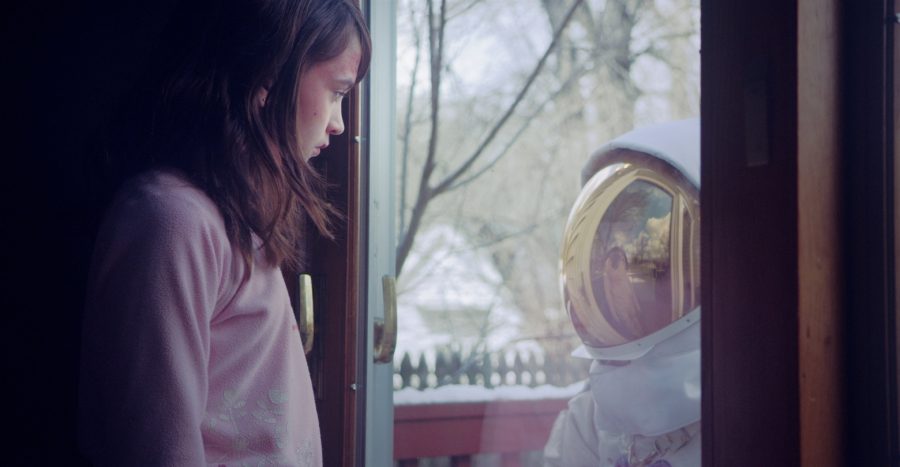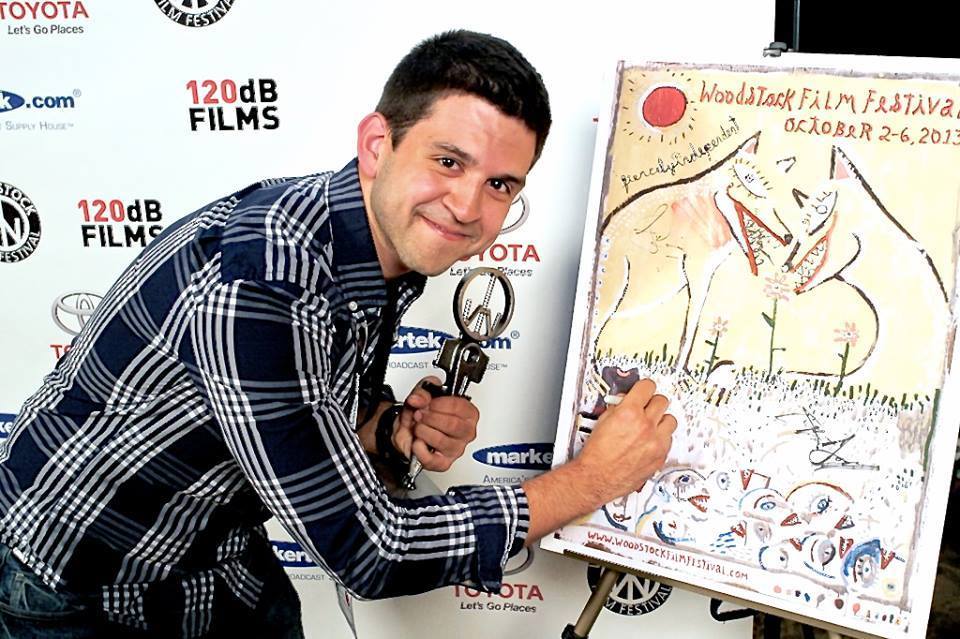
 Jeff Pinilla is the director of the acclaimed short film, “The Earth, the Way I Left It.” Centering on a grief-stricken young girl who encounters a mysterious visitor, Pinilla manages to tell a complex emotional narrative in a film without any dialogue and under twenty minutes, meditating on childhood, innocence, and loss. Most of all, the film evokes the cathartic power of a child’s imagination, its ability to shape and make sense of a chaotic world. “The Earth, the Way I Left It” is making the rounds at film festivals, where it’s picked up awards such as Best Narrative Short Film at the Woodstock Film Festival and you can see the trailer here. We spoke with Jeff recently about the making of the film and his plans for the future.
Jeff Pinilla is the director of the acclaimed short film, “The Earth, the Way I Left It.” Centering on a grief-stricken young girl who encounters a mysterious visitor, Pinilla manages to tell a complex emotional narrative in a film without any dialogue and under twenty minutes, meditating on childhood, innocence, and loss. Most of all, the film evokes the cathartic power of a child’s imagination, its ability to shape and make sense of a chaotic world. “The Earth, the Way I Left It” is making the rounds at film festivals, where it’s picked up awards such as Best Narrative Short Film at the Woodstock Film Festival and you can see the trailer here. We spoke with Jeff recently about the making of the film and his plans for the future.
The film makes extensive use of an 8mm film aesthetic to generate nostalgia and we even see the girl with a wind-up film camera. Did you shoot those scenes on film, or use a filter, and were you happy with the effect?
Those scenes were actually shot on real super 8mm film. I think the effect really helped because the one thing we wanted to emote was that no matter what the time period, these home movies look just like ours or yours.
Despite being shot in essentially one location, you’re able to convey an expansive world just as children do - through the use of toys, drawings, costumes, etc. Were you deliberately trying to integrate these childhood methods of make-believe?
Absolutely. We knew we wanted to treat the framing and the composition like a child-like fantasy world. The backyard was essential because it was a small, contained space where we also used a doghouse and a snowman to create a photographic border around the action that was taking place. One of the biggest inspirations we had were the "Peanuts” comic strips. This was the reason why anytime you heard the parents, it had a muffled sound. The same goes for "Snoopy’s doghouse" in the backyard. We always knew what our perspective was going to be even before the first storyboard was ever drawn up. Camera angles would remain low and any adult would never be visible from the chin-up (including in portraits) ... again, "Peanuts".
At the end of the film, these hand-made methods are contrasted with some good computer effects work, which I liked because the effects fit seamlessly with the emotional story and created a powerful ending. Are you happy that you saved the most impressive effects for last?
To be honest, even before I had a story, I knew that was the shot I wanted to end the film with. A technical note: to achieve that shot, we had one guy off to the right with a leaf blower, another guy behind the doghouse with a smoke bomb, another guy drilled a hole into the dog house with a string attached and when given the cue, the dog house was pulled down so that the CG elements would interact with the real environment. This was needed to blend reality with animation. I'd like to extend a thanks to both Mark Koenov and Jimmy Yeo (my CG team) for being essential to pulling that shot off.
How did this story develop? It has such powerful themes and imagery - did you conceive of one before the other?
I was just wrapping up my previous short, "After Ever After", and a co-worker of mine had been making T-shirt designs. One of his many designs included an Astronaut with his arm around two beautiful mermaids in the sea. The imagery just seemed so out of this world. That astronaut did not belong. I loved it. That visual sat with me for about a year and around Christmas 2012, I found a hi-8 camera at a salvation army store and with that I was able to go home and watch some of my home movies that I hadn't seen in years. After a couple of nights of binge watching myself as a 4, 7, and 12 year old, innocent and naive, I began to ask the question "when did I lose my innocence?" "When did the world become so real to me?" The nostalgia I was feeling while watching these tapes overwhelmed me. I knew I wanted to take these feelings and put them into the idea I was already writing. Somehow, someway, the two ideas met and the story began to fall in place.

The film is totally free of spoken dialogue. Did you always plan it this way and was it a challenge to convey the story?
It was a little bit of both. As the script was being written, the dialogue began to get phased out. With every pass there was less and less dialogue present. As you know, writing a screenplay with no dialogue can be a bit difficult but we figured that the best way to present this short is to not beat people over the head with anything. Instead of telling you what's happening we're just going to show you. That just seemed to be the most effective way to tell a story with this kind of emotion.
Seeing the film made me consider why kids respond so much to the idea of space. I think it’s because it’s abstract and big enough to contain anything - a repository for our hopes and dreams that feel too big for Earth. What do you think?
I absolutely believe that. Space has always been something that we all tend to be obsessed with as children but we also have this idea when we're young that we can be anything we want to be. By the time we become adults, that idea along with that innocence fades away. A child longing to be an astronaut is the perfect embodiment of youth and innocence.
As a child, were you as obsessed with space as the boy in the film?
Not so much. As a child I was more obsessed with the camera (like our character played by Amelia Osborne was) I always had it with me no matter what was going on. The only reason I was able to use my own home movies as reference was because I was the one who did most of the filming.
You’re based in NYC - has this affected your development as a filmmaker?
Yes. It has. I've been fortunate enough to collaborate with some incredibly talented people. My director of photography, Justin Simpson, my co-writer and producing partner Matt Pourviseh, my mentor and creative collaborator Christina Voros. These are all people that would have never been in my life had NYC never been in the cards and they have been essential to my growth and development as a creative.
What are your plans for the future? Do you hope to do more narrative filmmaking?
Yes. As we speak, we are wrapping up a narrative feature that we have spent the last three months editing. Along with all of this, I continue to collaborate with my team on several commercials and documentaries. We do stay pretty busy and we're able to work as a family to really bring some creative edge to every project we touch. Hopefully we'll have another piece shortly after we wrap up the festival circuit with this film.
You can follow Jeff on Twitter and learn more about his work at JeffPinilla.com